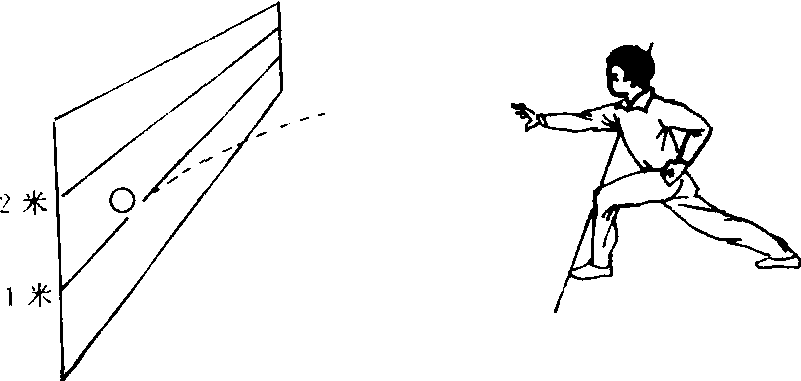击球得分Jiqiudefen
适用于5—6年级。可以发展学生身体的协调性,提高冲拳技术。
器材 排球若干个。
场地 在球墙上分别画离地面高1米、2米的两条平行线。墙前4米处再画一条与墙线平行的横线。
游戏方法 把学生分成若干组,每组5人。预备时,第一组5人分别成弓步姿势站在横线后,弓步前脚踏线,同时1手前平举托球,另1手握拳于腰间。游戏开始,握拳手前冲将球击出。击出的球打在墙1米线以下得2分,打在1米至2米之间得5分。按上述方法,第一组做完第二组做,依次进行。最后以全组积分最高为胜。

游戏规则 ❶必须用拳面将球击出。
❷不可扔球或越线击球。